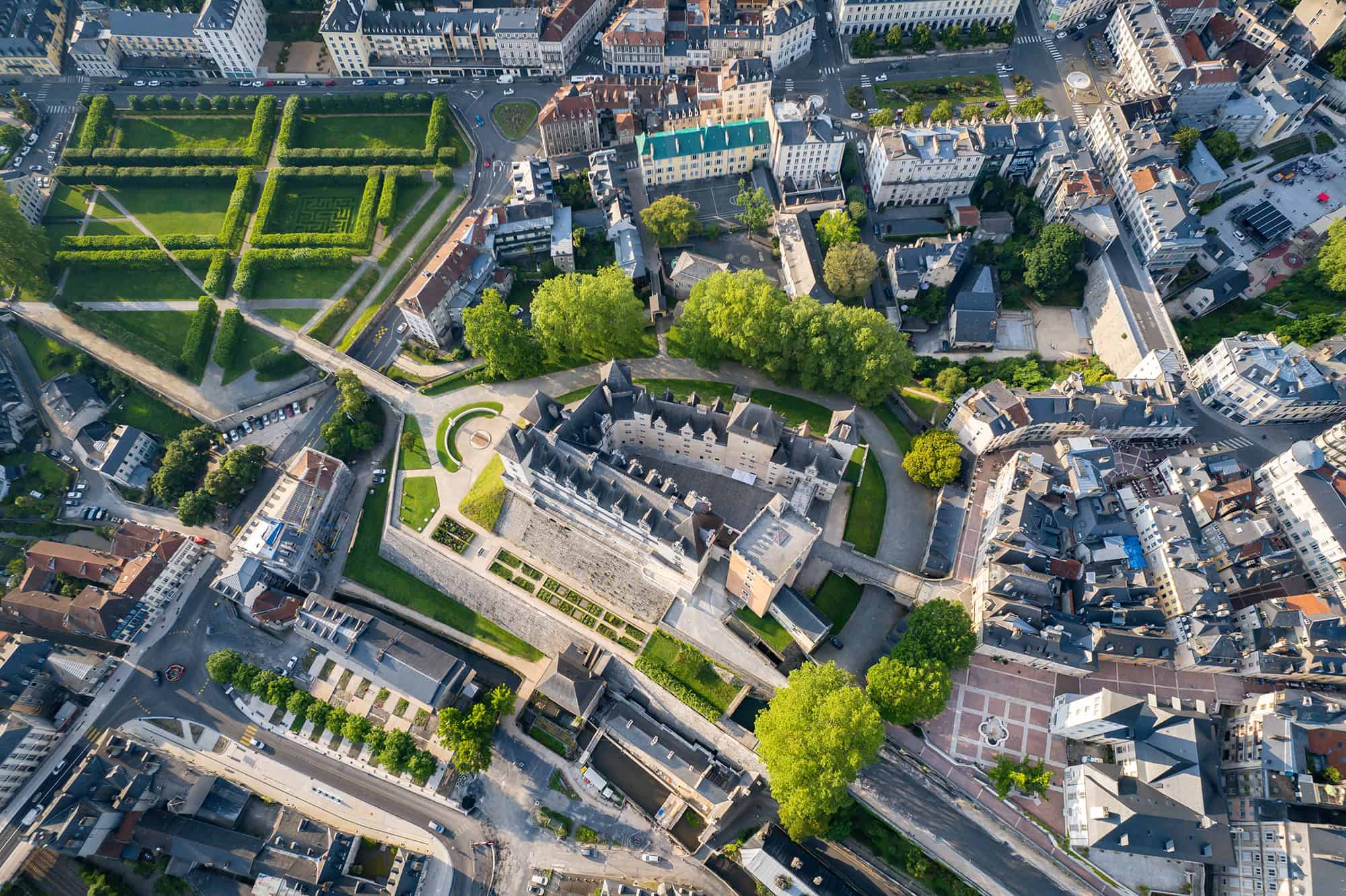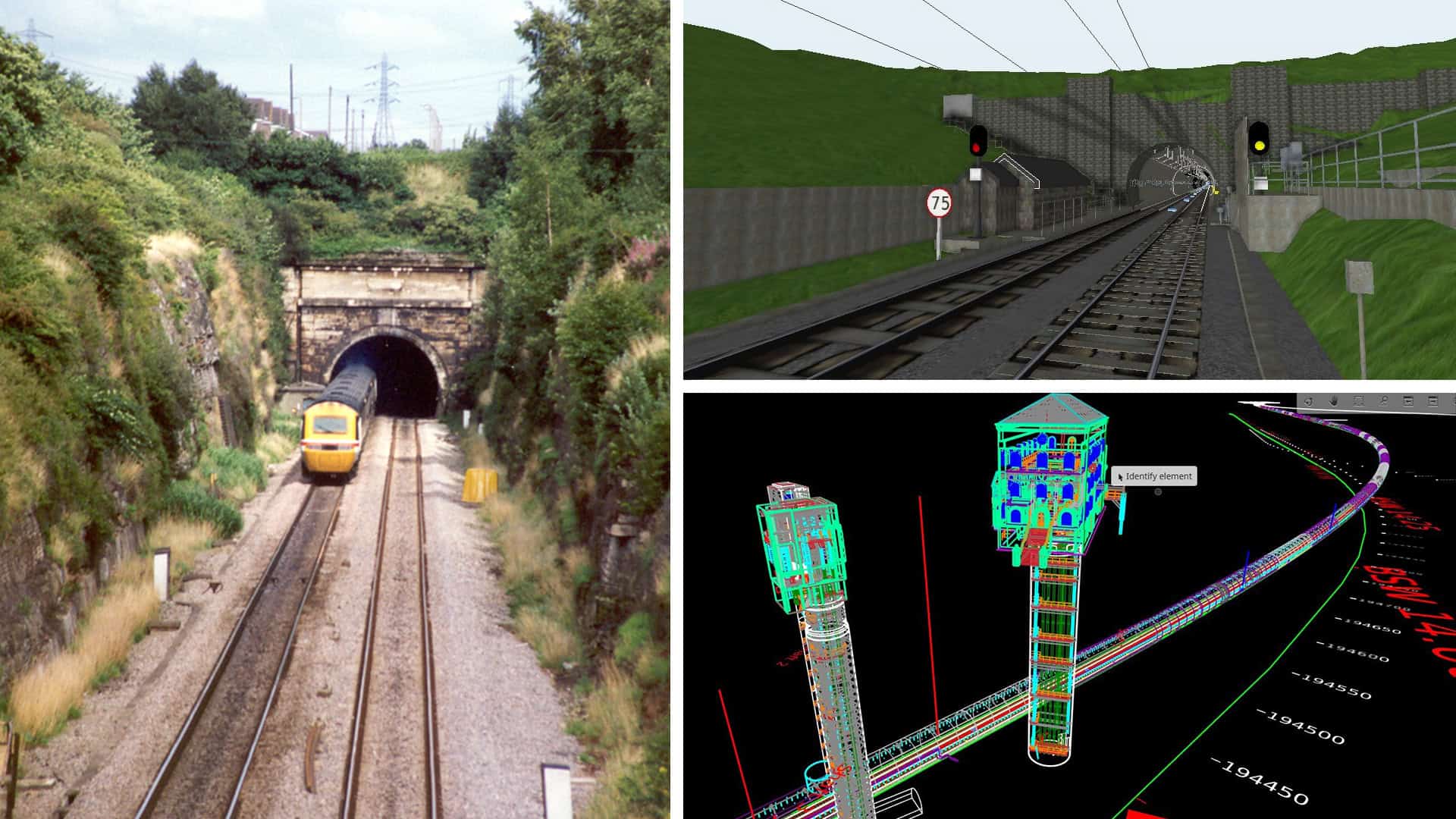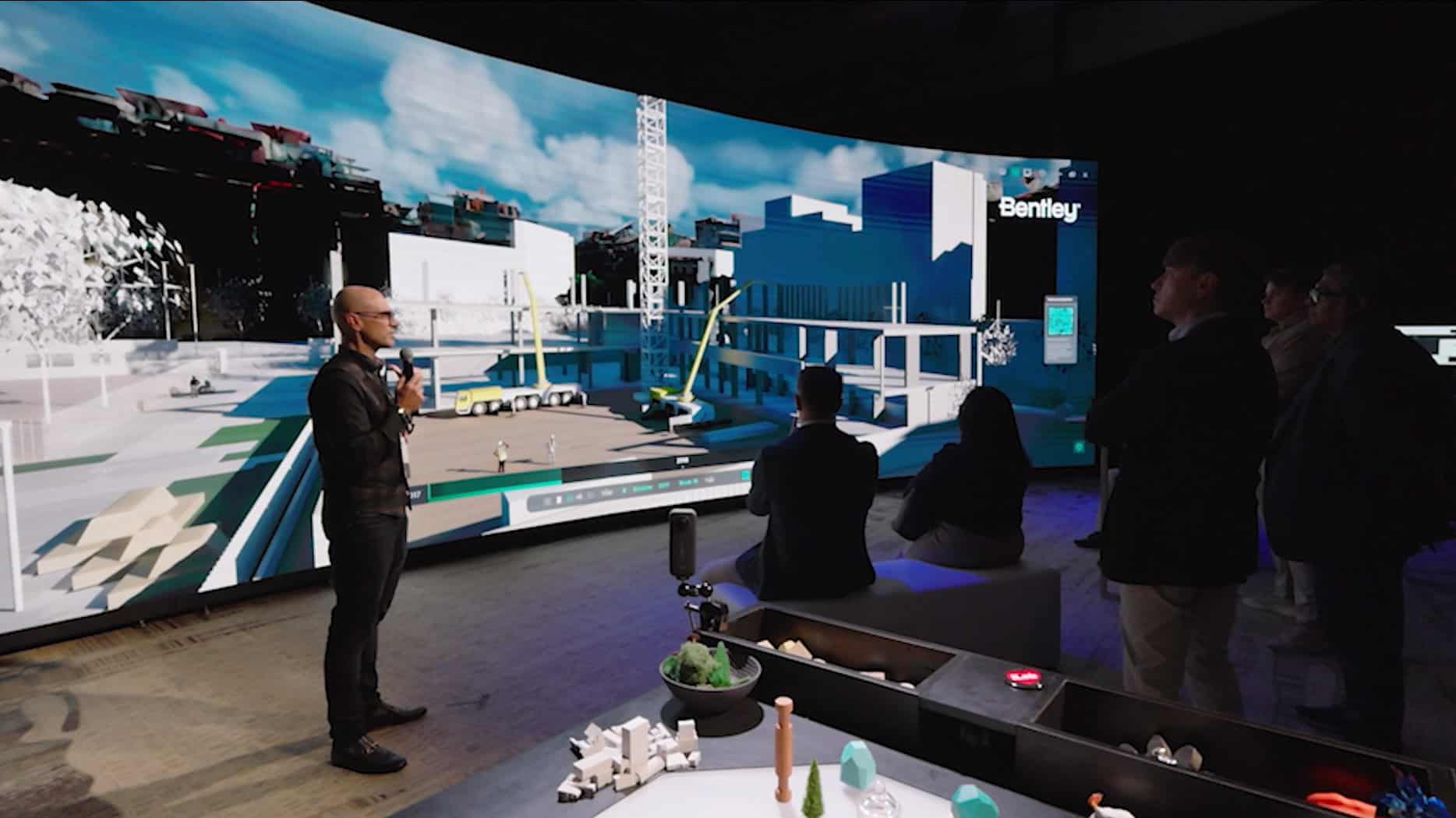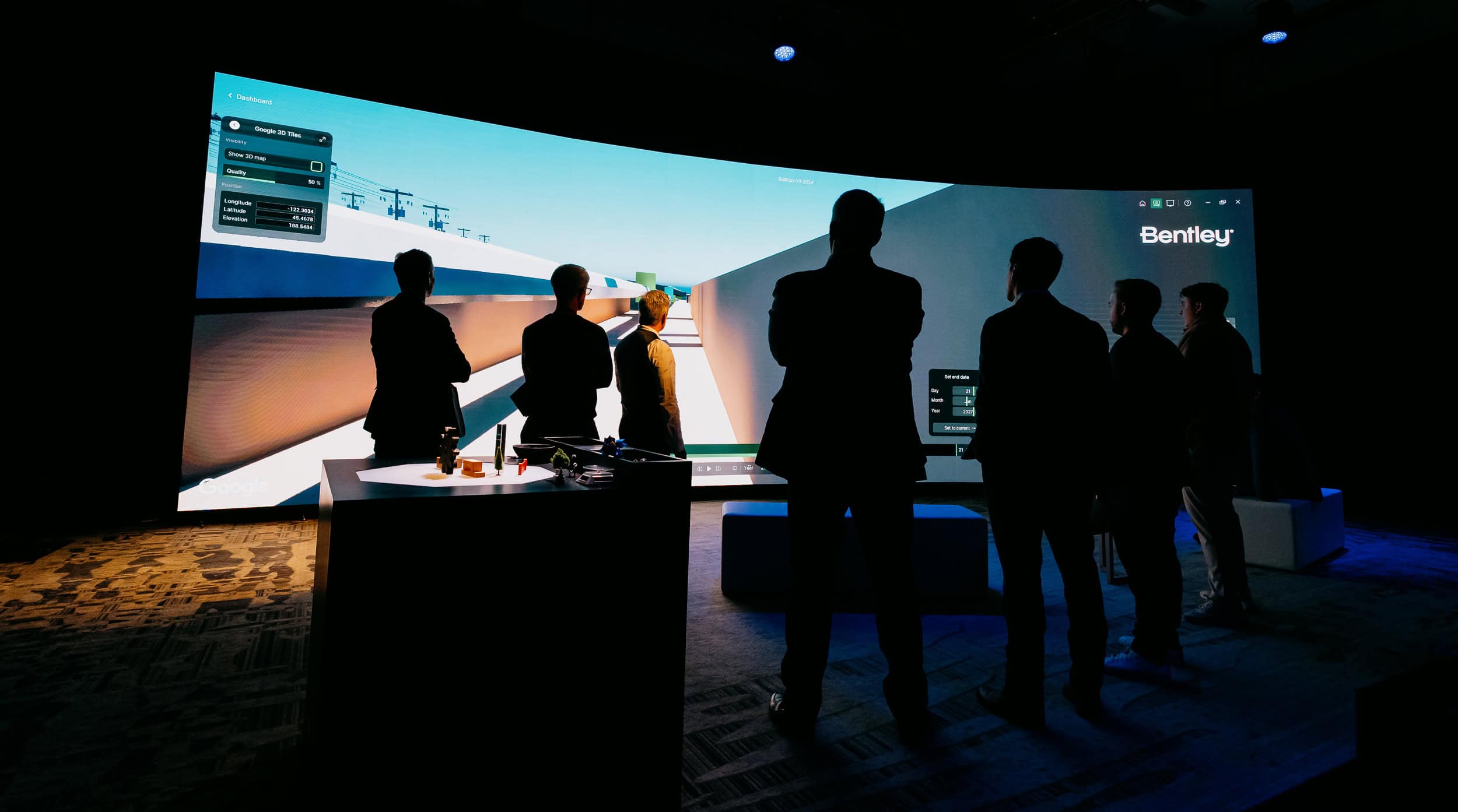Setting foot on alien worlds is back on the agenda, big time. NASA’s Artemis program is aiming to send astronauts to explore parts of the lunar surface no human has ever visited — targeting rugged, shadowy terrain near the Moon’s south pole. But before anyone sets foot there, they need to train for our desolate satellite’s unforgiving landscape.
That’s where Buendea, a specialist in real-time extended reality (XR) simulations and storytelling, comes in. XR simulations are life-like representations of virtual worlds, and Buendea’s platform, the NASA XR Operations Support System (XOSS), creates a fully explorable digital twin of the Moon. The digital model combines NASA’s high-resolution surface scans and photogrammetry with Cesium Moon Terrain, a high-fidelity geospatial dataset from Cesium, the 3D geospatial company now part of Bentley Systems. The whole environment runs in real time inside the gaming engine, Unreal Engine.

But why stop at the Moon? XOSS also includes a high-fidelity Mars simulation, extending its use for mission planners, engineers, and astronauts preparing for future interplanetary missions. XOSS lets astronauts walk, work, drive lunar vehicles, and practice mission tasks long before leaving Earth.
When veteran NASA astronauts enter these virtual worlds, including four-time Space Shuttle veteran Michael Gernhardt, “they are just mind blown by the fidelity we are able to achieve,” says Buendea founder Julian Reyes.
Besides preparing astronauts for lunar surface operations, XOSS is also providing space infrastructure pioneers the ability to place their designs in realistic settings.
From Mars to the Moon
The story of Buendea begins in the 2010s, when Reyes was part of a small cadre of developers at Fusion Media Group harnessing game engines to create virtual reality (VR) elements for online journalism projects.
In 2012, a reality TV-style Mars colonization concept called Mars One was launched by Dutch entrepreneur Bas Lansdorp. The ambition of the project was matched only by its impracticability. Part of that disillusionment came from a feasibility study published by graduate students at the AeroAstro Lab at the Massachusetts Institute of Technology. Reyes was intrigued by the whole saga, and he contacted the authors to find out more about putting humans on Mars. (One of those authors was Sydney Do, who now works at NASA’s Jet Propulsion Laboratory.) They provided Reyes with NASA technical papers related to habitation, rovers, space suits, and other technology. “We knew immediately it would be perfect for an immersive VR experience,” Reyes says.
Reyes and his team reached out to researchers at NASA’s Langley Research Center and Johnson Space Center, eventually signing on with NASA to create a VR recreation of the Red Planet known as Mars 2030. But what began as a public-facing VR project evolved into something more serious. “We started presenting our work to the teams at NASA, and they were like, ‘Well, this is amazing, but why is this just a public outreach project? Why aren’t we using this technology for simulation?’” Reyes says.
This was around 2018, when many NASA teams were still relying on offline rendering engines that couldn’t operate in real time. The prospect of seeing habitats and mission scenarios rendered live, inside VR, was a revelation. And at NASA, the Moon was beckoning.
Seeing the opportunity, Reyes quit his job and formed Buendea, partnering with NASA’s Advanced Operations Concepts Lab (NAOCL) at Johnson Space Center to begin developing simulation environments that could meet real operational needs.
At the heart of that work is XOSS: a multi-user XR platform capable of simulating both extra-vehicular and intra-vehicular activities, and enabling complex mission scenarios to play out inside highly detailed digital twins of the Moon and Mars.
Cesium to the rescue
Modeling the Moon at the fidelity and geospatial accuracy required for astronaut training presented a serious challenge. Initially, Buendea teams considered building a full lunar dataset themselves — but they caught a break when Cesium, already known for its high-resolution 3D models of Earth, launched its own Cesium Moon Terrain dataset in 2024. Reyes had been in touch with Cesium over the years, hoping for exactly this kind of development. “I’d said to [Cesium Founder] Patrick Cozzi, ‘Hey, can you guys help us out with 3D Tiles for the Moon?’”
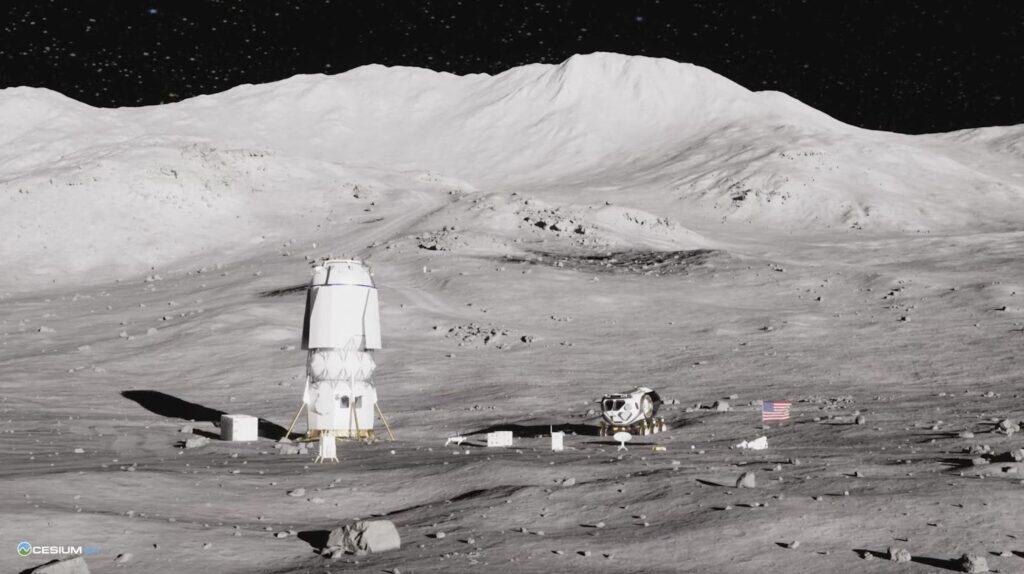
Reyes got his wish. Buendea had already been generating extremely high-resolution lunar tiles of the nine potential Artemis landing sites around the lunar South Pole, using NASA photogrammetry and scans that captured surface geology and texture in granular detail. Cesium Moon Terrain provided the comprehensive 3D baseline for the rest, served via Cesium ion and integrated into Unreal Engine via the open-source Cesium for Unreal plugin.
Reyes says integrating Cesium Moon Terrain into their Unreal XOSS project “effectively cut our development time by more than 50%.”
Training the astronauts of Artemis
Today, XOSS plays a central role in multiple NASA programs that prepare astronauts for missions to the Moon and Mars, including how the human body performs in these extreme environments. One of the most sophisticated is the APACHE project (Assessments of Physiology and Cognition in Hybrid Reality Environments). The project uses XOSS to study how astronauts respond physically and cognitively to extra-vehicular activities.
Astronauts train wearing customized VR headsets and a full-body motion capture kit, and walk on omnidirectional treadmills. Specialized suits even replicate the fatigue that astronauts would feel wearing pressurized space suits. Physiological data — including oxygen consumption, carbon dioxide levels, and metabolic strain — is captured in real time, helping NASA fine-tune mission protocols.

The realism of these simulations is no accident. They are computationally demanding at a level rarely seen outside high-end gaming or film visual effects. In some VR setups, Buendea runs up to three graphics processing units per eye, simply to maintain the fidelity and frame rates required for astronaut immersion. And that’s before adding additional complexity like multi-user motion capture and real-time physics.
Building on that complexity, Buendea and NAOCL are also developing support systems powered by artificial intelligence (AI) to assist astronauts during simulated missions — providing real-time, context-aware guidance for equipment operation, task sequencing, and even basic medical procedures. Internally, the team jokingly refers to their AI assistant as “Haley,” a nod to HAL 9000 from 2001: A Space Odyssey. (Just don’t ask Haley to “Open the pod bay doors.”)
Simulating lunar regolith
Buendea is now pursuing one of its most technically ambitious projects: simulating the behavior of lunar regolith — the fine, powdery dust that covers the Moon’s surface. Regolith affects mobility, vehicle stability, and equipment longevity.
Buendea is working with an international academic collaboration that includes the University of Central Florida to develop real-time regolith physics models that can run inside Unreal Engine. It’s a big challenge: high-fidelity granular physics is typically too computationally intensive for real-time VR, but Buendea is solving this through cutting-edge multi-GPU parallelization.
Buendea is also collaborating with SpaceData, a Tokyo-based company, to add additional layers of environmental realism to their digital twin of the Moon, including simulations of lunar gravity, surface temperature extremes, and particle ionization effects that astronauts and equipment would face on a mission.
Welcome to the lunar village
While mission training astronauts is XOSS’s raison d’etre, it also serves a more speculative, long-term purpose: providing a showcase, and a virtual location, for the infrastructure that may one day support long-term lunar habitation.
Because carrying building materials to the Moon would not only be prohibitively expensive but also completely impractical, concepts for lunar habitation frequently include 3D-printed modules made from lunar soil, so it’s much more than just a gritty problem to solve. “Regolith will be the foundational element for any type of construction on the moon,” says Reyes.
Among the most striking designs already integrated into XOSS is a proposed lunar base, designed by space architecture experts at Hassell in collaboration with the European Space Agency. The design is a scalable habitat system that could accommodate up to 144 people at the Moon’s South Pole. It would be constructed using 3D-printed regolith structures that provide radiation shielding for the inflatable habitat modules underneath. “We’ve dropped that habitat into XOSS in the Connecting Ridge 1 near Shackleton Crater, at the South Pole,” says Reyes.
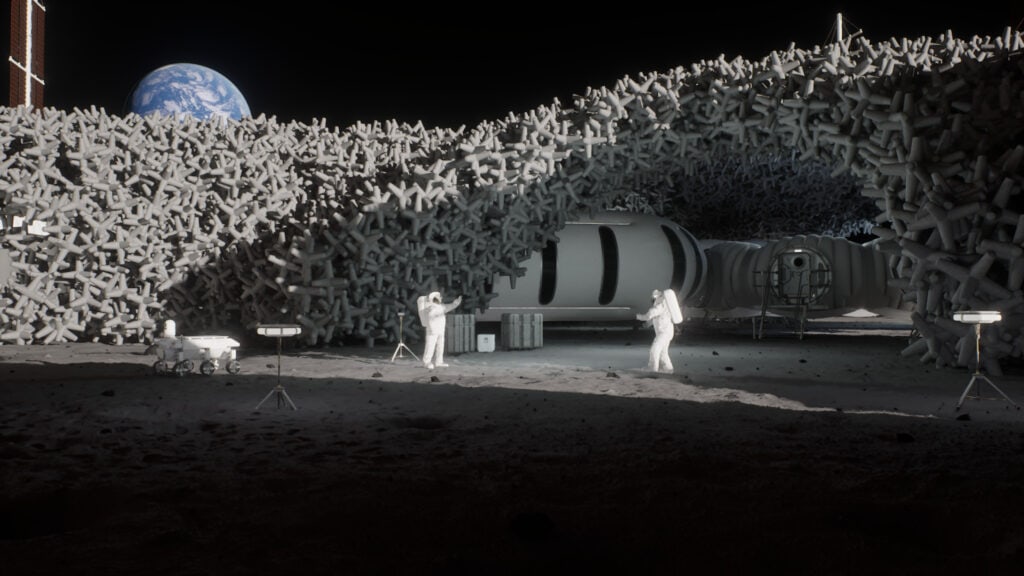
XOSS is also becoming testbeds for future robotic and autonomous systems that could one day operate alongside astronauts. “These environments are already some of the most realistic you can possibly create,” says Reyes. “They’re ideal testing grounds for autonomous vehicle training — and they’re the foundational element for any type of future construction on the Moon.”
Opening up the Moon for everyone
Perhaps the most far-reaching element of Buendea’s vision is its long-term plan to open up XOSS as a global platform where researchers, architects, engineers, and universities could prototype lunar concepts together. The AAVS Moonshot program is part of this vision. In partnership with the U.K.’s Architectural Association Visiting School, Buendea provides participating architects with highly detailed virtual models of the Moon — including surface data from Cesium Moon Terrain and custom high-resolution scans — allowing them to explore everything from habitat design to site placement inside XOSS.
Working alongside partners including Hassell and Astrolab, participants use the simulation to visualize space infrastructure designs and test operational scenarios—such as driving Astrolab’s unpressurized FLEX rover, which astronauts may use on future Artemis missions. Through NASA, Buendea has also integrated Axiom Space’s AxEMU spacesuit into the system, enhancing realism during extra-vehicular activities training.

Previous competitions, such as the Mars XR Challenge, co-hosted by Buendea, attracted more than 5,000 developers worldwide using Unreal Engine to create immersive, realistic experiences on the Red Planet. “Imagine how exponential it would be to democratize the Moon, letting people contribute from all different backgrounds,” says Reyes.
Party on the moon
Yet despite all the technical innovation and cutting-edge visualizations, Reyes is clear on what still excites him most. “To me, it’s really the human element, where you’re exploring this alien place with someone else. The funnest thing to do is multiplayer, when we’re all set up in the full-body motion capture kit. It really feels like you’re hanging out with other astronauts on the lunar surface.”
If NASA’s Artemis program succeeds, future moonwalkers may one day stand on the rim of Shackleton Crater, taking in that alien landscape. And just as people on Earth might say an awe-inspiring view “looks just like a postcard,” those astronauts — gazing out from inside their pressurized suits — may smile and say: “It looks just like XOSS.”
Sean O’Neill is a seasoned editor, journalist, and science communicator. He spent 14 years at New Scientist and served as the magazine’s People Editor. Sean has written for Google DeepMind, served as communications lead at the Cambridge Centre for AI in Medicine at the University of Cambridge, and worked as a Science Writer for The Alan Turing Institute in London. You can also find his byline on AI stories and profiles on the Bentley blog.

